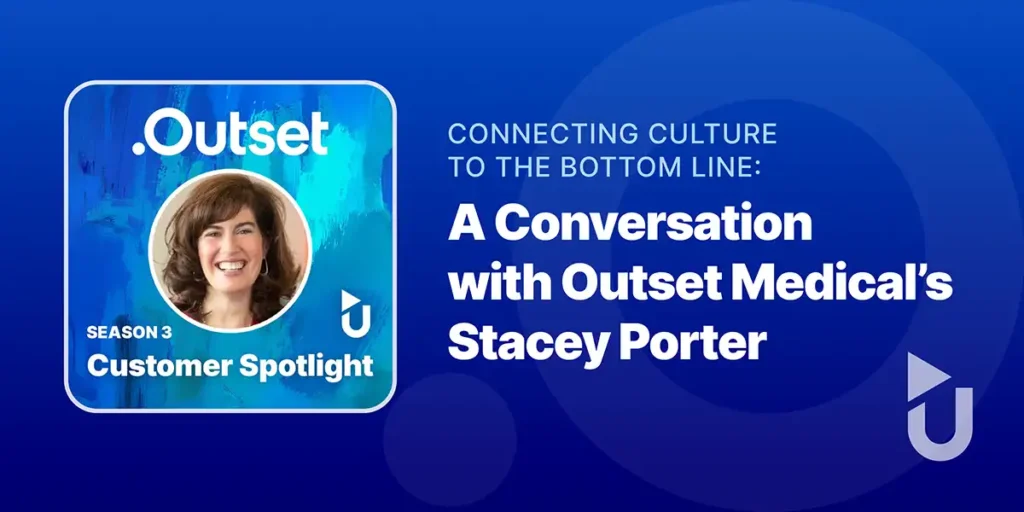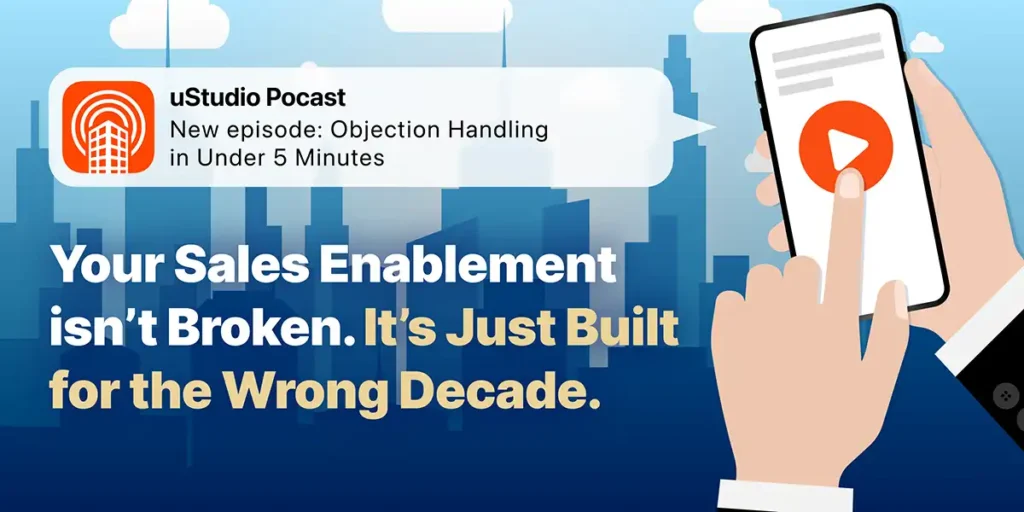How to Scale Private Podcasts for Large Enterprises in 5 Easy Steps
Jackie Logan | Uncategorized

Scaling private podcasts for large enterprises is a powerful strategy to boost enterprise communication and improve internal podcasting efforts. By focusing on these key areas, you can transform how your distributed teams access information:
- Streamline access to critical updates and training.
- Engage employees through easily accessible audio content.
- Implement secure distribution, ensuring information stays private.
With so many companies operating with a remote or distributed workforce, effective internal communication is vital. Private podcasts have emerged as an innovative solution, offering a compelling way to engage employees, deliver training, and facilitate seamless information flow across an enterprise. They are a secure and efficient method for keeping your teams informed and connected no matter where they are in the world.
With the right strategy and tools, scaling private podcasts can enrich corporate culture, improve employee engagement, and alleviate common communication challenges. Successful scaling involves careful consideration of content management, secure distribution, and audience engagement to ensure that the benefits of this dynamic communication tool are fully realized.

Understanding the Need for Private Podcasts
In the era of remote and hybrid work, private podcasts are becoming essential for enterprises with a distributed workforce. It has always been a challenge for large companies to stay connected, and while emails and annual meetings can be effective, secure podcasts are gaining popularity.
Unlike emails that flood inboxes (close to 400 per week on average) and are often ignored or skimmed, on-demand and live podcasts reach people where they are, often in their "in-between" times when they are less distracted. Think on the subway, at the airport, driving between appointments. Scaling private podcasts for large enterprises is easy because once the streaming network is established, creating content becomes as natural as sending an email. Let's take a look at some of the top benefits and a few challenges of private podcasting.
3 Key Benefits of Private Podcasts for Enterprises
- Employee Engagement:
Private podcasts offer a unique way to engage employees who might not be tied to their desks. Whether they're on the road or working from home, employees can listen to podcasts at their convenience. This flexibility helps ensure that important messages are heard.
- Onboarding and Training:
Onboarding new employees can be a cumbersome process. Private podcasts streamline this by providing audio content that new hires can consume at their own pace. Training modules can be transformed into engaging audio series, allowing employees to learn while multitasking. - Culture Building: Podcasts can foster a sense of community within a company. By sharing stories, interviews, and updates, companies can strengthen their culture and make employees feel more connected. Dell, for instance, saw an 80% adoption rate when they scaled private podcasts throughout the enterprise, showing the potential impact on company culture.
3 Challenges in Scaling Private Podcasts for Large Enterprises
The following challenges have a caveat: they can be easily overcome with the right podcasting solution. For instance, YouTube and other public podcasting platforms are great when you aren't concerned with privacy, but when it comes to enterprise podcasting, you need a platform that prioritizes security and access control measures.
- Security: When scaling private podcasts, with is a top concern. Enterprises need robust security protocols to ensure that sensitive information remains confidential. This means choosing streaming podcast platforms with advanced security features like SSL sign-in and user authentication.
- Content Management:
Managing content for a large audience can be daunting. Enterprises must plan and organize content to keep it relevant and engaging. This involves curating a mix of interview formats, storytelling, and educational pieces to cater to diverse audience needs. - Audience Segmentation: Different teams within a company have different needs. Audience segmentation is crucial for delivering the right content to the right people. This ensures that employees receive information that is directly relevant to their roles, enhancing the effectiveness of the communication.
Scaling private podcasts for large enterprises requires thoughtful planning and execution. By addressing these challenges and leveraging the benefits, enterprises can transform their internal communication and foster a more connected and informed workforce.
5 Steps to Scaling Private Podcasts for Large Enterprises
For smaller organizations, a basic private podcasting solution may be all that is needed. But for dynamic enterprises that may have a global workforce, a more advanced secure podcasting solution is the only way to go. Scaling private podcasts for large enterprises involves a strategic approach that ensures effective content delivery while maintaining security and engagement. Here are five steps to guide you through the process:
Step 1: Define Objectives and Audience
Before diving into podcast production, it's crucial to outline clear objectives. Ask yourself: What do we want to achieve with this podcast? Are we aiming to train, inform, or inspire? Once objectives are set, identify your target audience. Different departments like sales, marketing, or customer service may need custom content to meet their specific needs.
Tip: Use audience segmentation to determine which content is most relevant and valuable to them, then deliver it at the right time. This ensures that each team receives the information most pertinent to their roles when they need it most.
Step 2: Choose the Right Platform
Platform selection is critical for scaling private podcasts. Look for platforms that offer robust security protocols to protect sensitive content. Features like SSL sign-in and user authentication are essential to restrict access to authorized users only.
Pro Tip: Consider platforms that allow for mobile access and offline listening. This flexibility ensures that employees can engage with content anytime, anywhere, even without internet access. The less friction there is to listening to the podcasts, the greater the adoption rate will be.
Step 3: Develop Engaging Content
Content is king, even in the field of private podcasts. Focus on creating engaging and diverse content by incorporating storytelling, interviews, and educational formats. A mix of formats keeps the content fresh and caters to different learning styles.
Actionable Advice: Plan content in advance and batch-record episodes to maintain a consistent release schedule. This approach not only saves time but also ensures that you always have content ready to go. Also, get audience feedback on what they want to hear or learn most, then work that content into your content calendar.
Step 4: Implement Secure Distribution
Secure distribution is vital to maintaining the integrity of your private podcast. Use access control measures to ensure only the intended audience can access the content. This might involve distributing unique RSS feeds to users or using a company-owned app for content delivery.
Note: Push notifications can be a great way to alert employees about new episodes, increasing engagement and ensuring timely consumption of content. You can also neatly organize podcasts by audience, topic or date so it's easy for listeners to see what podcasts are new for them.
Step 5: Measure and Optimize
Once your podcast is up and running, use analytics to track engagement. Pay attention to metrics like listenership, episode completion rates, and feedback. This data will provide insights into what’s working and what needs improvement.
Feedback Loops: As mentioned, encourage listener feedback to refine content strategies. Regularly updating content based on feedback ensures continuous improvement and keeps your audience engaged.
By following these steps, enterprises can effectively scale their private podcasts, ensuring that they serve as a powerful tool for internal communication and employee engagement.
Be Where Your Employees Are, No Matter Where They Are
As we look to the future of enterprise podcasting, it's clear that private podcasts are becoming an essential tool for internal communication and employee engagement. Employees are on the go, and podcasts are the ideal channel that can go with them.
By choosing the best B2B podcast production partner, companies can ensure their content is both secure and accessible, meeting the needs of a modern, mobile workforce.
The benefits of integrating private podcasts into corporate strategies are manifold. They offer a unique way to engage employees, provide training, and reinforce company culture, all while maintaining the flexibility that today's workforce demands. Moreover, the ability to segment audiences and tailor content ensures that each department receives the most relevant information, enhancing overall productivity.
As technology advances, the integration of artificial intelligence and machine learning could provide deeper insights into listener preferences, allowing for even more personalized content experiences. Additionally, the rise of interactive HTML5 media players, where listeners can engage in real-time, promises to further improve employee interaction and feedback.
Scaling private podcasts for large enterprises can transform how companies engage with their employees. With the right platform, the sky's the limit as to what types of content you can create and distribute, ensuring your growing workforce always has a centralized location to learn, connect and engage. As enterprises continue to accept this medium, those who invest in robust platforms and innovative content strategies will lead the way in creating dynamic, connected, and informed workplaces. Want to see a secure enterprise podcasting solution in action? Request a uStudio demo.
I am an experienced Go-to-Market and product development leader of SaaS solutions across several industries, both commercial and government. I blend creativity, strategy, and research to launch and evolve products with a knack for asking the right question at the right time to expose unspoken market needs. I leverage my crisp communication skills to organize cross functional teams, manage high-profile client success, and publish public-facing product marketing material.


